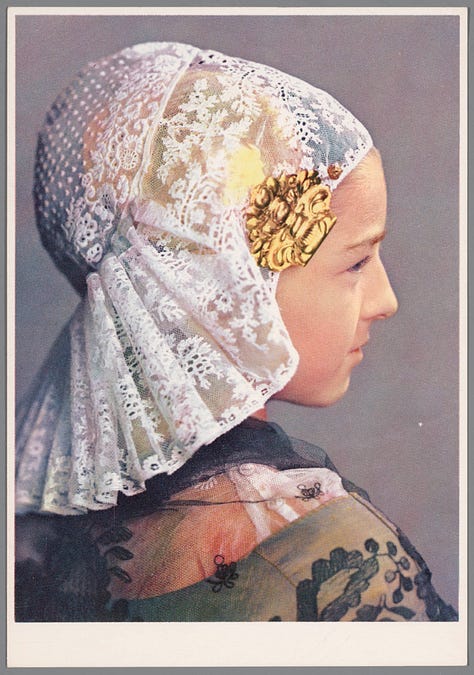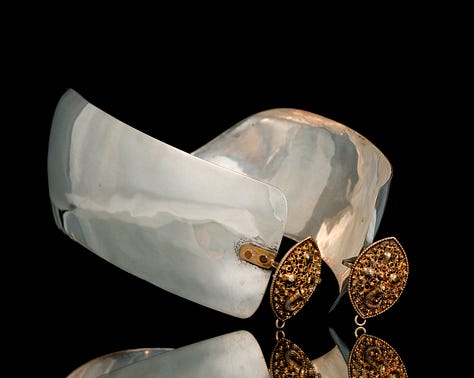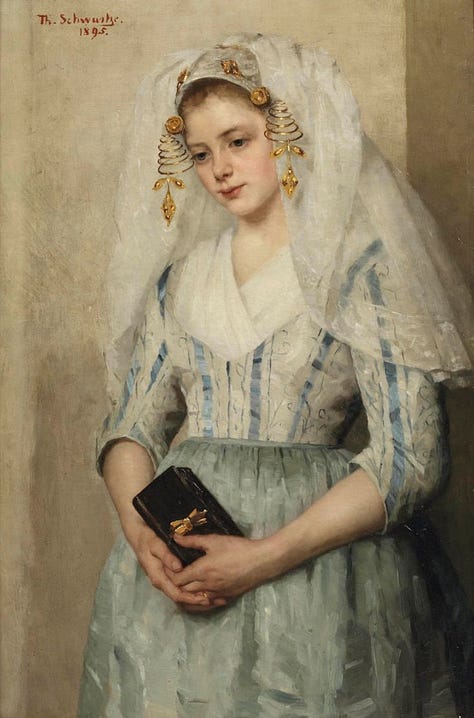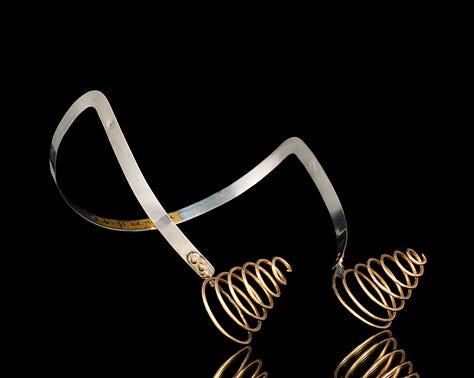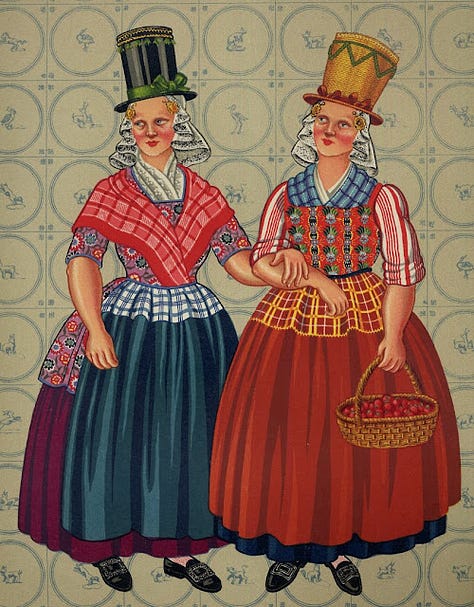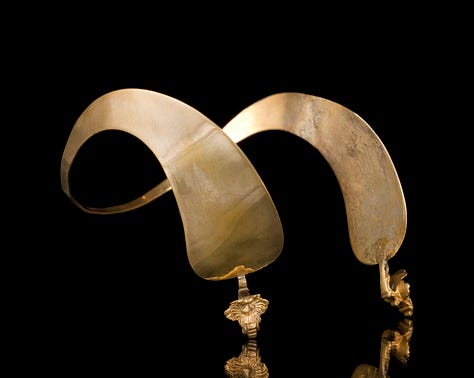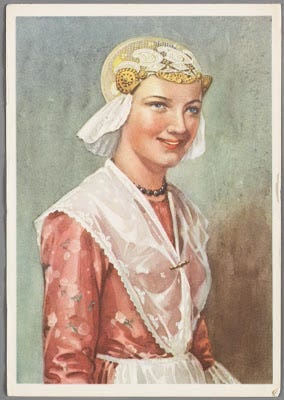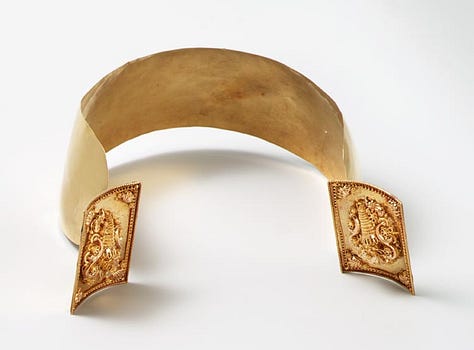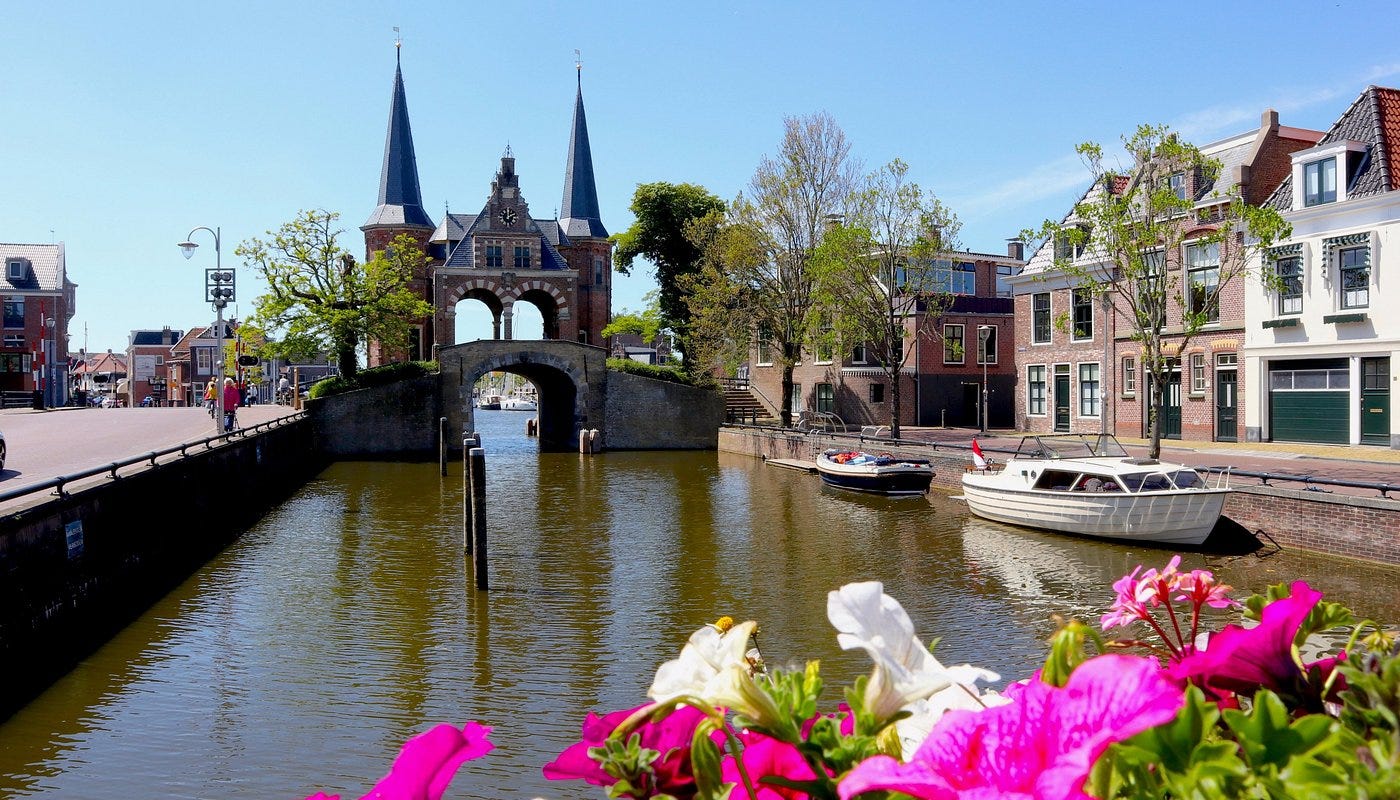Accessorizing Accessories: The Fantastical Dutch Ear Iron
Part 2 of looking into my heritage through the lens of jewelry. This time, uncovering my Frisian roots.
My dad was born in a quaint and charming town in Friesland, called Sneek, situated in the northwestern part of the Netherlands. He immigrated to the US when he was 3, so needless to say, he didn’t retain much of the language, customs, or culture from his native land. His father passed away when he was 15, and my grandmother, his mother, died when I was only 3, taking with her the opportunity to learn about my Dutch heritage firsthand.
I didn’t grow up completely without a connection to my Dutch heritage, though. I remember the popping sound of oil as we made fried dough balls on Christmas morning, a traditional sweet called oliebollen. I was also always surrounded by the Delft blue ceramics my mom had been amassing since her initial trip to the Netherlands with my Dad.
When I was 9, we took our first family trip to Holland to visit my cousins. My parents bought me and my siblings a Dutch phrasebook to prepare us for the trip. We memorized how to count to ten, and how to say ‘de WC is verstopt’, translating to “the toilet is blocked”. A super important phrase.
As a kid, I wasn’t paying attention to the fashion or jewelry displayed in the museums I had visited on that trip, and it wasn’t even until a couple of years ago that I came across these alluring pieces of jewelry, most likely worn by my distant relatives.

A couple of years back, I was looking for design inspiration and came across some photos of these bizarre, almost futuristic-looking face ornaments worn by Dutch women. I had never seen anything quite like them, but at the time, I had no idea what to do with the discovery, except to bookmark them for another time.
Fast-forward to two weeks ago, when I first started my Substack. I was brainstorming ideas for what types of articles to write, and felt pulled to begin with uncovering the origins of the jewelry from my three cultural heritages. After posting my first piece on the origins of Italian coral jewelry, I received a comment from someone talking about their traditional Dutch coral jewelry, and it felt like a sign that I was heading in the right direction.
INTRODUCING THE DUTCH EAR IRON
Introducing the oorijzer or ‘ear iron’. The ear iron originated during the 16th Century in the Netherlands, specifically the province where my dad was from, located in Friesland. It initially started as a thin, inconspicuous wire that women would wear around their heads, typically under their bonnets. They functioned as a fastener to keep their cotton or lace caps in place, preventing them from sliding off throughout the day.

A SUPER BRIEF HISTORY
With the sudden boom of agricultural prosperity in the 17th century came the growth of the ear iron, literally. The oorijzer became increasingly larger and more ornate, to the point where it covered most of the head, looking more like something out of a sci-fi film than traditional garb. It was an accessory prevalent among rural communities, especially in Friesland and Zeeland, and was worn as a signifier of prosperity, locality, profession, and religious affiliations.

MATERIALS & ACCESSORIZING THE ACCESSORY
Ear irons were usually made of solid gold, silver, and brass, but have also been found in gilt copper & silver. Pendants called krullen (meaning to curl) adorned the ends of the ear irons, protruding at the sides of the face, or sometimes situated closer to the top of the forehead. Designs ranged from simple spirals to elaborate filigreed designs.

Functional pins called mutsspelden or kapspelden, (literally ‘hat pin’, or ‘cap pin’) were another accessory used with the thinner ear irons. They helped secure the oorijzer to the bonnet fabric, creating more security while adding another layer of interest and personality to their headwear.

To accessorize even further, earring-like pendants could be suspended from the ends of the krullen to complete the look. These are called oorijzerhangers (ear iron pendants), which are basically chandelier-style earrings that were suspended in front of the face like in the photo of the woman above. Dutch women wore bonnets as expressions of modesty, but boy, did they know how to make them extra, in the best way possible.

I know that I’m over-romanticizing this time and place, but I feel like clothing was so much more fun back then. Commoners may not have had the resources to wear a new fit every day, but they certainly knew how to incorporate color, texture, pattern, symbolism, and scale in a way that made their everyday dress feel extraordinary. I’m also aware of the implications of modest dressing, but I can’t help but admire the delightful fashion and extravagant bonnet styles complete with oorijzer depicted in the drawings below by Jan Duyvetter.

You may have noticed that in many of the images I sourced, they also donned these gorgeous, multi-layered, statement coral necklaces. Often worn alongside the oorijzer, these pieces added yet another element of meaning and beauty to their everyday, which I plan to cover in another article.
I didn’t want to make this post too long, so I think I will do a short series on the other types of incredible Dutch jewelry I found, including ‘blood coral’ (don’t worry, it’s not as scary as it sounds), garnet jewelry, and something called the Dutch button (which is a motif I’ve also seen used in traditional Swedish and African jewelry, and I’m curious to research and see if there’s a connection…).
Now that I’ve uncovered all the fascinating styles and quirks of the oorijzer, I’m feeling freshly inspired. I’d like to think there’s a playful way I can reimagine these historical pieces into modern and wearable jewelry for today. Something that would bring a bit of light and whimsy into such a heavy time.
I had no idea when I first started my research that the ear irons went this hard and had so many options to accessorize! I hope you learned something fun from this post, and let me know what you found most interesting. Thanks for reading :)
